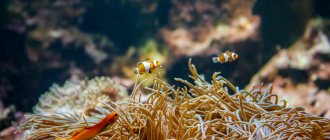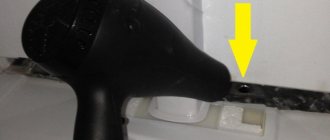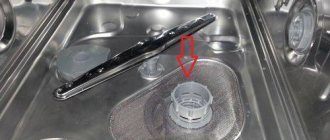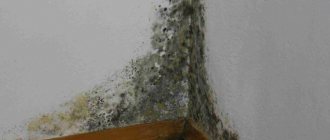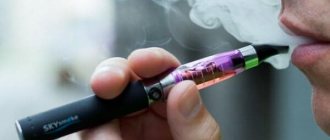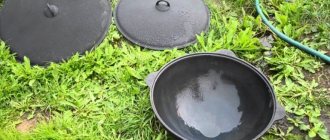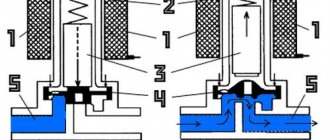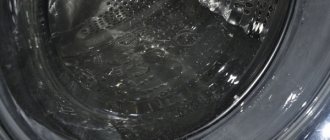Even inexperienced aquarists know that if the water in the aquarium turns green, this is a signal of trouble. Such a nuisance can be caused by various factors and negatively affect the health and life expectancy of the inhabitants of the aquatic environment. For this reason, every person whose home is decorated with a “living corner” needs to know how to deal with the bloom of a pond. Those for whom aquarium keeping is a long-time hobby or a means of earning money know for sure that blooming water is not always considered an indicator of poor care of the contents of the tank and its untimely cleaning; sometimes a greenish tint appears almost immediately after replacing the liquid. There are a huge number of reasons for this phenomenon, and before deciding how to deal with the scourge at home, you will need to find out why the water in the aquarium turns green.
Main reasons: why the water in the aquarium turns green
There can be many reasons for greening, and they are usually due to the inexperience of aquarists.
Euglena green
The name of these single-celled algae speaks for itself and is very familiar to people who have been breeding ornamental fish for a long time. Euglena forms a thin film on the water surface and is an important link in the food chain.
With poor lighting, the green body of euglena becomes discolored: the alga noticeably turns pale or completely loses color . Mass reproduction, leading to increased algal blooms, occurs when:
- intense lighting;
- excess of organic components in water;
- malfunction of aquarium filters.
The flowering of euglena can be very violent: just yesterday the water was absolutely clear, but today it has acquired a cloudy green hue.
Other factors
Provocateurs of greening of aquarium water are also considered:
- unreasonably frequent maintenance of the container (cleaning, renewal/aeration of water);
- poor aquarium maintenance (no compressor, insufficient aeration, rotten water);
- increased water temperature;
- a huge number of planted plants;
- accumulation of chemicals (organic substances) in water;
- incorrect lighting mode (more than 10-12 hours a day) or direct sunlight directed at the aquarium.
Important! Beginning lovers of ornamental fish make another common mistake: feeding them without taking into account natural needs. The fish do not have time to completely eat the food and it sinks to the bottom, where it rots, contributing to the greening of the water.
Why is this problem dangerous?
Green water itself is not dangerous for fish, but its causes can cause irreparable harm.
In addition, due to a lack of lighting, the photosynthesis process in plants slows down, they do not release oxygen, which is so important for the respiration of fish, shrimp and even beneficial bacteria.
Therefore, it is so important to use enhanced aeration during this period.
Also dangerous are dead parts of plants that begin to rot, thereby filling the aquarium water with organic compounds and further aggravating the situation. It is not advisable to feed the fish during this period; they, of course, will not die of hunger, but it will cause them some discomfort.
What to do if the water turns green
You can return water to a transparency that is pleasing to the eye in a variety of ways, including resorting to the help of natural cleaners.
Natural cleansing
Introduce so many live daphnia into the aquarium that the fish cannot eat them right away. These planktonic crustaceans can easily cope with excess unicellular algae that have proliferated in the “fish house” . Place “tenants” in it, whose main food is algae: fish (catfish, mollies, platies) and snails.
Look for bladderwort and hornwort (aquarium plants), which, due to their accelerated growth, absorb excess nitrogen accumulated in the water (a catalyst for flowering). Thus, a hornwort can stretch 1.5 meters in a week. First remove the humus from the bottom, replace 1/2 of the water and only then place the plants in the aquarium.
Mechanical cleaning
First, check the operation of the aquarium equipment to make sure there are no problems. It may be worth purchasing additional devices for water clarification, such as:
- UV sterilizer that regulates the growth of algae with directed ultraviolet rays;
- diatomaceous earth filter - thanks to a special filter composition, it retains contaminants and suspended elements measured in microns.
Mechanical cleaning methods can be combined/interspersed with chemical methods.
Chemical cleaning
The operation of the aquarium filter will become more productive if you add activated carbon (in granules) to it. In the process of getting rid of green water, the filter itself is cleaned 1-2 times a week.
This is interesting! Another proven remedy is powdered (crushed) streptomycin, diluted in water. 3 ml of solution per liter of aquarium water is sufficient. This dosage does not affect the fish, but it fights well against the growth of unicellular algae.
It wouldn’t hurt to acquire the Hyacinth coagulant, which was created for drinking water purification, but is also extremely useful in aquarium farming. On the manufacturer’s website it costs 55 hryvnia, which corresponds to 117 Russian rubles. The drug has been tested in action. It turned out that its active formula is capable of neutralizing both organic and inorganic harmful impurities.
Signs
Signs of ecosystem disturbance:
- cloudiness of water;
- change in color of the liquid to green and brown;
- the scenery, water surface and soil are covered with a green film or coating;
- increased content of phosphorus and nitrates;
- abundant appearance of green plaque in the aquarium.
Plaque in small quantities is considered normal. Don't be alarmed if you notice a few green dots in your aquarium. Observe the flora; if the glass becomes more green and the water becomes cloudy, this should be a cause for concern.
What to do with the inhabitants of the aquarium
Please note that deterioration of the biobalance of the aquatic environment has a bad effect on the health of all aquarium guests.
Manipulations for water purification must be accompanied by parallel measures:
- if the fish are healthy, temporarily move them to other containers with a similar water composition;
- place the plants in temporary containers, stirring methylene blue in water (dosage according to the instructions);
- if necessary, replace the old soil with a new one (pre-treated for parasites);
- discard the old water, fill the aquarium with water with the addition of baking soda (1-2 tsp) and leave for a day;
- scald/boil all artificial decorations, including grottoes, driftwood and shells.
If the fight against greening is not radical and the fish remain in the aquarium, only a third of the water is usually changed to fresh.
What causes rapid greening and how does it differ from gradual greening?
Gradual greening is a consequence of problems in the aquarium. It is provoked by the accumulation of a large number of organic elements.
The water changes color due to certain types of algae that are found in absolutely any aquarium. It’s just that in a healthy tank they are not allowed to develop higher plants; they lack nutrition.
But sudden greening is also possible, which turns the water the color of a swamp within just a few hours. This happens most often in the summer, when aquarists use tap water during water changes, and with it these same algae, which grow well in natural reservoirs.
Remedy for green water in aquarium
When regular cleaning and changing the lighting do not improve the situation in the aquarium, liquids and tablets based on substances that inhibit the growth of bacteria and algae on the surface of the water are used. Manufacturers of such products know what to do if the water in the aquarium quickly turns green: they add humic substances to all preparations, which naturally combat film and turbidity. They can be identified by the presence of such components as:
- monolinuron;
- algizite;
- copper sulfate.
Preventing the problem from recurring
To do this, simply follow the following recommendations:
Regularly care for the aquarium - water changes, soil siphoning, filter maintenance.- Use only high quality feed.
- Use glutaraldehyde (glutaraldehyde) in a prophylactic dosage.
- Do not overfeed the inhabitants.
- Ensure healthy growth of higher plants - apply fertilizers, normalize lighting.
- Don't create overpopulation.
- Have green water control products at the ready at all times.
- In the summer, it is better to use bottled or osmotic water for changes, but not from the tap.
If you follow all the recommendations, the likelihood of reappearance of algae in the water column will be minimal.
Preventive actions
After cleaning using one of the listed methods, you will need to take preventive measures to maintain a normal microclimate in the aquarium. This is necessary to prevent the water from blooming. This is not difficult to achieve; it is enough to follow simple recommendations: install the container so that it is not exposed to direct sunlight; when laying the soil, place the contents at an angle, placing a denser layer of pebbles towards the front wall of the tank; adjust the backlight power at the rate of 0.5 W per 1 liter of content; periodically turn off the lighting, and algae will not grow as actively (many types of underwater plants can do without artificial light for 5-7 days in a row); cover the tank with a lid to prevent particles of dust, insects and debris from entering the water; control the operation of aquarium equipment; Regularly clean the container, decorative elements and replace the water.
These steps do not eliminate the need to periodically replace the contents of the aquarium, but they will help curb bacterial growth and prevent the water from becoming cloudy and green too quickly. Like any pets, fish require proper care and maintenance of cleanliness in their habitats. The peculiarity of underwater inhabitants is that they spend their entire lives in one container, and for their comfortable existence you will need to carefully monitor the microclimate of the underwater world. Otherwise, the inhabitants of the artificial reservoir will get sick and die prematurely.
Proper aquarium care
Professionals in this field know that Euglena viridis reproduces systematically. To do this, you should monitor the level of nitrogen in the water when you first start up the equipment.
Attention! If you have an old aquarium, it is better to take water and cleaning equipment from there. Shortened daylight hours (up to 2 hours per 24 hours, over 30 days) will help regulate nitrogen levels.
With constant monitoring of the devices, the aquarium will be fine. If the aquarium is blooming, it is recommended to check the fish feeding schedule.
How to get rid of permanent green deposits on the walls of an aquarium?
User deleted
Blue-green algae Cyanophyta are colonial or filamentous multicellular organisms. They have a characteristic color due to the phycocyan pigment, which gives them a blackish, bluish or brownish color. Many species have a slimy coating. Blue-green algae usually settle at the bottom of the aquarium, then rise higher, covering the walls and plants with a thick slimy layer. An unpleasant odor appears in the aquarium. Sometimes they form a floating form of short hairs 1 to 3 mm long. The reasons for the active reproduction of these algae are an excess of mineral and, above all, nitrogen-containing compounds, low redox potential, and excess fertilizer applied. The development of these algae occurs under intense lighting. Often blue-green algae infect new aquariums, which is due to the insufficient assimilative ability of higher plants after transplantation.
Natalia Grigorieva
Green algae deposits on glass, appliances and plants are usually harmless unless the algae has grown too much. Generally, simply cleaning the front glass of the aquarium with a scraper is sufficient. To destroy excess algae, you can introduce fish into the aquarium that eat them (for example, a number of viviparous carp-toothed fish). Temporarily darkening the aquarium, protecting it from strong sunlight or (if artificial light is too bright) installing a weaker lamp also helps. But the appearance of brown algae is usually a sign that the aquarium is lit too dimly. Brown algae most often appears in the winter months when there is a lack of artificial lighting in the aquarium; in the spring they disappear. There are, however, other reasons for the massive proliferation of brown algae. The way to combat them is to remove them with a scraper and increase the lighting of the aquarium.
Cold Spring
You need to get ancistrus catfish, their main food, a coating of algae on the walls, stones, etc. Quote: “An absolutely unpretentious fish both in terms of keeping and breeding conditions. Although in natural conditions ancistrus live in soft, slightly acidic water, nevertheless in aquariums they easily adapt to life in hard and even very hard water. For example, they are often kept in aquariums with African cichlids, which require very hard and alkaline water to live. The fish are peaceful; being born vegetarians, they deal only with their internal relationships and completely ignore other aquarium inhabitants. Of all types of food, they most prefer soft and delicate green algae, which often grow on the glass of an aquarium illuminated by light. Moving over glass and plants in spasmodic movements, they constantly look for stones, driftwood overgrown with algae, wide leaves of aquatic plants and other decorative objects, to which they immediately attach their mouths and begin to scrape off their favorite delicacy. However, it should be taken into account that ancistrus still prefer a certain type of algae and therefore are not universal cleaners. Nevertheless, a couple of young ancistrus can clean even a five-hundred-liter aquarium to a mirror shine in one day. For the aquarium owner, this is doubly pleasant because ancistrus clean not only easily accessible glass, but also all sorts of difficult-to-clean stones, which otherwise would have to be removed from the aquarium and scrubbed off with a brush. They love various shelters, crevices, ceramic tubes, etc. The greatest activity usually occurs in the evening or when there is a sharp drop in atmospheric pressure. They love clean, oxygenated water and try to stay with the current in the aquarium. They are very fond of various driftwood, the fact is that the driftwood in the aquarium is gradually covered with a layer of organic mucus, all sorts of planktonic microorganisms, rotifers, bryozoans, and for ancistrus this is a real delicacy. Males usually occupy the most attractive cave, from their point of view, or a gap between stones and try to stay near it, driving away possible competitors. "
gyretta
You usually need snails and a good filter! so that it is suitable for your aquarium (filter size per liter of aquarium) if there is one, then maybe it needs to be washed more often. Clean the aquarium more often. and by the way, don’t take catfish - they’re more waste than they’re useful! and if you don’t have the time to clean it often (in general, you need to clean it once every 2-3 weeks) - buy an aquarium scraper! Available in any pet store! approximately 50-100 rubles =)
Causes
The appearance of plaque is caused by improper maintenance of the aquarium and disruption of its biological environment. Algae that creates a green coating on the walls of the aquarium:
- green euglena;
- xenococus;
- filament of oedogonium.
Thermal mode
Elevated temperatures have a beneficial effect on the development of weeds. Make sure that the lamp does not heat the water too much, and in the warm season, be especially attentive to the temperature regime.
In warm water, oxygen spreads less well, chemical reactions proceed faster, stimulating the release of nitrates into the water. These substances provide food for green weeds.
Light mode
Avoid direct sunlight on the walls of the vessel. The amount and spectrum of light plays a role. In summer, daylight hours do not exceed 12 hours, in winter – 7. The walls of the aquarium turn green from the intense light of the yellow spectrum.
Large amount of feed
The food that is not removed from the bottom becomes food for the lower greens. Remove excess feed with a siphon or net.
Human waste
Together with uneaten food, waste products create conditions for the proliferation of green algae and poison the water with ammonia and nitrates.
